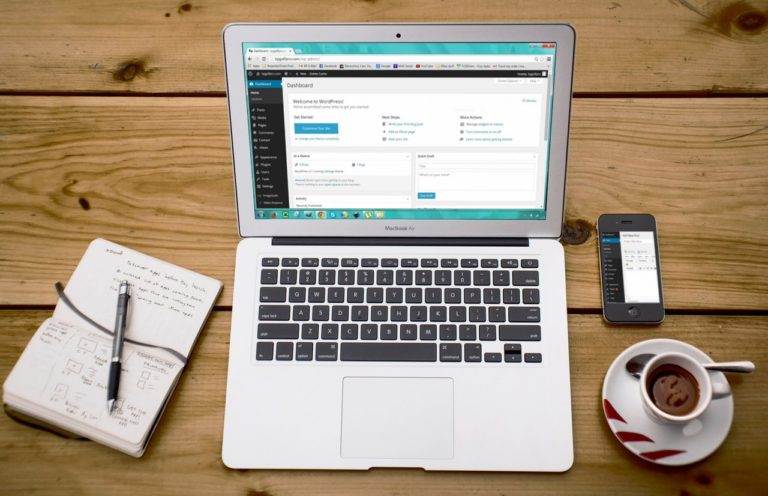Website Content Checklist: Everything You Need To Build Your Website
Building a new website can be a daunting task. But with the right planning, you can create a website that looks great and functions well. This website content checklist will outline the essential elements needed to make your website launch a success.
1. Your Brand
The Name – Make It Relevant, Unique and Memorable:
Once you have a clear understanding of what your company is and who it needs to attract, you can begin searching for a name that accurately portrays your company’s identity. Always consider the branding potential of the name. Make sure the name unique and memorable.
Here’s how you come up with a great name:
- Determine what your business is: is it a bakery, a restaurant, a catering company, make sure you use the word (or a variation of it) in your name
- Research popular business names that reflect your industry: bakery names include Cake Boss, Cupcake Queen, and Sweet Treats; restaurant names include Joe’s Pizza, Prime Rib Palace, and The Hungry Cat; catering company names include Big Apple Catering and The Event Planner’s Kitchen; and so on.
- Choose a name for your business that describes what it is in simple terms. For example, if you’re a bakery, choose a name like Sweet Treats Bakery or Pastry Boss.
Once you have settled on a name, you’ll need to register a domain name for your website, and it should be the same as the name of your business or very close to it.
But it can be difficult to find the .com version of your name, so you may have to adjust your name a bit to ensure you can have the domain name that aligns with it. Before registering a domain name, be sure to check with your domain registrar to make sure that the name is available and to determine the registration fees.
Logo – Your Brand’s Visual Signature
Your website’s logo is your brand’s visual signature. It should be simple, easy to remember, and reflect the overall aesthetic of your website. A good logo should be versatile and can be used on different types of media, from print materials to social media profiles. When choosing a logo, keep in mind the following tips:
- Choose a simple font for your logo. A font that is simple and easy to read will make your logo stand out and be more memorable.
- Use a light or neutral color for your logo. This will help it look good on a variety of backgrounds and
- Make sure you have different formats and sized for your logo as they it will be needed and displayed on a variety of different mediums, pages, etc…
Colors And Fonts – The Mood Of Your Website
In terms of designing a website, colors are really crucial. They can have a big impact on the atmosphere of the website. For example, if your website is geared towards a business audience, you might choose to use a more professional color scheme. On the other hand, if your website is meant to be fun and inviting, you might choose to use colors that are more cheerful and cheerful.
Here, again, a list of different websites that you like or would like to emulate will be a helpful tool in building a website you’ll be proud of.
When choosing colors for your website, it’s important to think about the mood that you’re trying to create. For example, if you’re designing a website that’s meant to be fun and upbeat, you might choose colors that are brighter and more cheerful. If you’re designing a website that’s meant to be more serious or professional, you might choose darker.
2. Website Content
Images – The web is a visual medium, make use of it!
Images play an important role on the web. Not only do they help convey the message of a website, but they can also be used to create a visual hierarchy and add emphasis to certain elements. When designing a website, make sure to take advantage of images to create a visually appealing and effective site.
If you are building an e-commerce website, you’ll need professional photos of each of your products, preferably taken with a white background. Photos can be used to help shoppers find the products they’re looking for and to give your website a more polished look.
Text – Setting The Tone
A website’s text (copy) is its foundation – it sets the tone, communicates the message, and attracts and engages visitors. Make sure the text on each page is accurate, well-written, and persuasive and meets your target audience’s needs. Keep in mind that your content should take into account proper SEO protocols to ensure it is indexed by search engines.
Here are some tips for creating great copy:
- Use clear, concise language.
- Be honest and authentic.
- Be persuasive.
- Be on brand.
- Use keywords throughout the text.
- Use images that support the text.
- Use headings to organize the text.
Keep in mind also that there are a few must-have pages your website should include and for which you need the copy.
- Homepage
- About Us
- Contact Us
- Team Page
- FAQs Page
- Terms and Conditions
- Privacy Policy
- 404 Page
- E-commerce stores also need one page per product, so you do need a description written and one good image of each of your products. The longer the description, the better. The more photos per product, the better.
Videos
Whether to ‘dress up’ your website, or because they are an integral part of the services or products your company delivers (think online courses, for example), make sure you have all the videos you need fully edited, ready to go, and compressed for maximum online streaming speed.
3. Technical Considerations
Web Platform – Choose Wisely
Choosing the right web platform for your ecommerce store is no easy task. There are so many to choose from, and each has its own unique set of features and benefits. Here are some tips to help you make the decision:
- Take into consideration your company’s objectives. What exactly do you want your website and your website content to accomplish? Trying to sell items online is one thing; trying to develop an online community or run a blog is another. What are your goals? What sort of Website content do you want to show the world?
- Take into consideration the people that will be visiting your website. What is the demographic of your target market? Are you selling to consumers only, businesses only, or a combination of the two types of customers? What is the age range of the participants? What language do they communicate in?
- Other considerations: are you more (or less) technically inclined, do you favor functionality over simplicity?, how much time are you going to devote in learning a new system, etc..
Please note that moving your website content and formatting from one platform to another can be time consuming and costly. That’s why choosing the right platform early on is preferable.
Web Hosting
Some of the most popular web platforms, such as Shopify, Squarespace, and Wix, incorporate hosting as an integral element of their offerings. When it comes to open source or custom websites, choosing the correct web hosting company is critical. There are a lot of factors to consider, such as the size and complexity of your website, the type of website hosting you need, and your budget. You also need to make sure that the web host you choose has the features and capabilities you need to run your website.
Some factors to consider when choosing a web host include:
- The size and complexity of your website. A host with more resources can handle larger websites with more features and content.
- How versed is the hosting company in the web platform you chose ?
- Speed and Security. Will you need to add maintenance to your hosting fees, or are you able to do this in house?
For E-commerce Stores: Merchant Account to Collect Payments
A merchant account is a must for any e-commerce business. Without one, your business will not be able to collect payments from customers. Stripe and Paypal are the undisputed leaders in this space, providing many options and they will integrate easily with your e-commerce engine. Your bank may have a solution for you as well.
For E-commerce Stores: Know Your Tax Rate(s)
What’s the tax rate you should apply when selling your products online? Check with your accountant, as the tax rate for e-commerce stores will vary depending on the individual store’s specific circumstances (for example, are you selling local, statewide, national or international?).
4. The Legal Stuff
Make sure you have yourself covered with the appropriate Terms and Conditions as well as Privacy Policy terms your website will present to your users. Depending on your exact business, other terms may need to be drafted – think about the Returns and Refund policy your ecommerce website will need to display.






